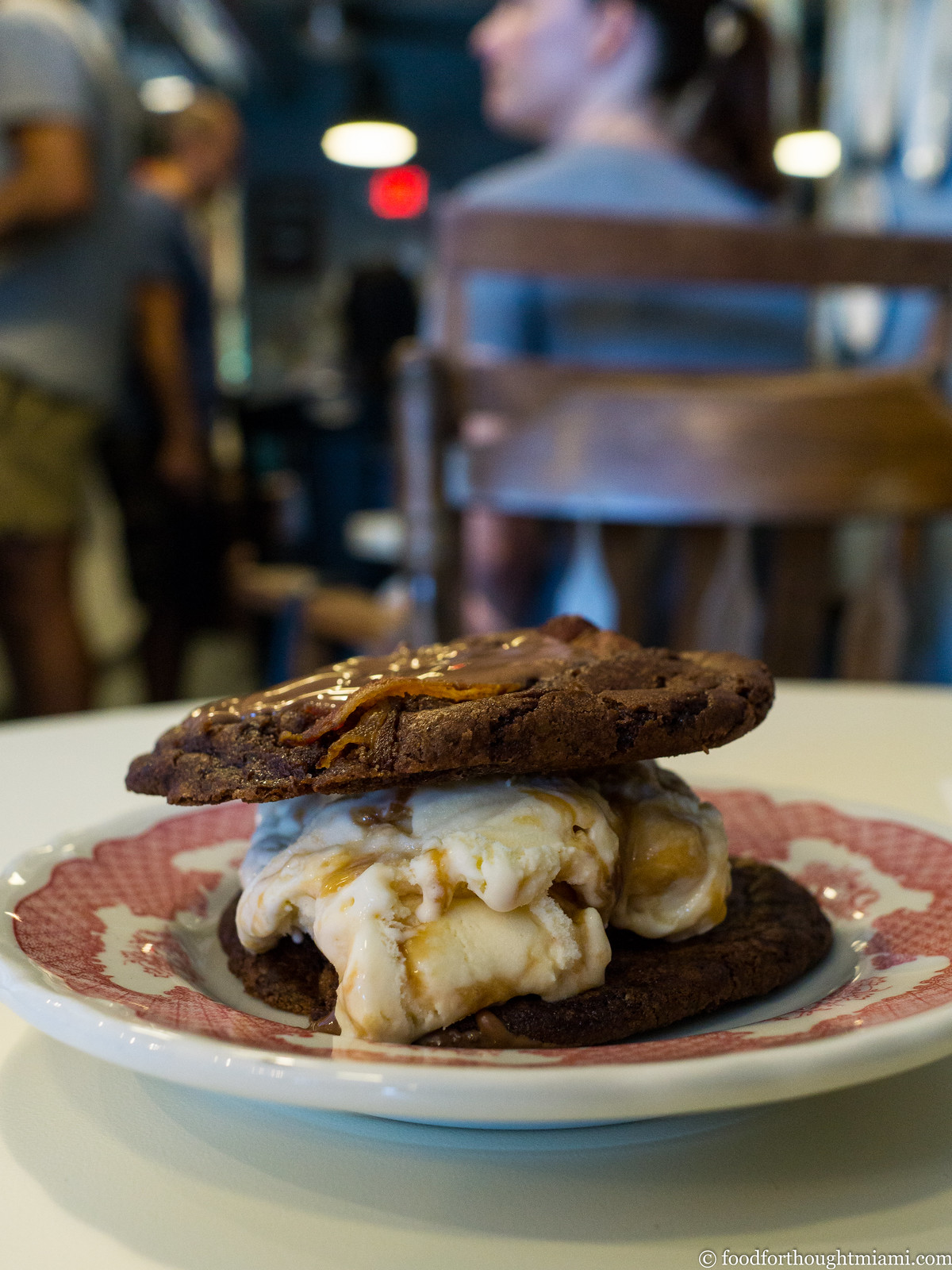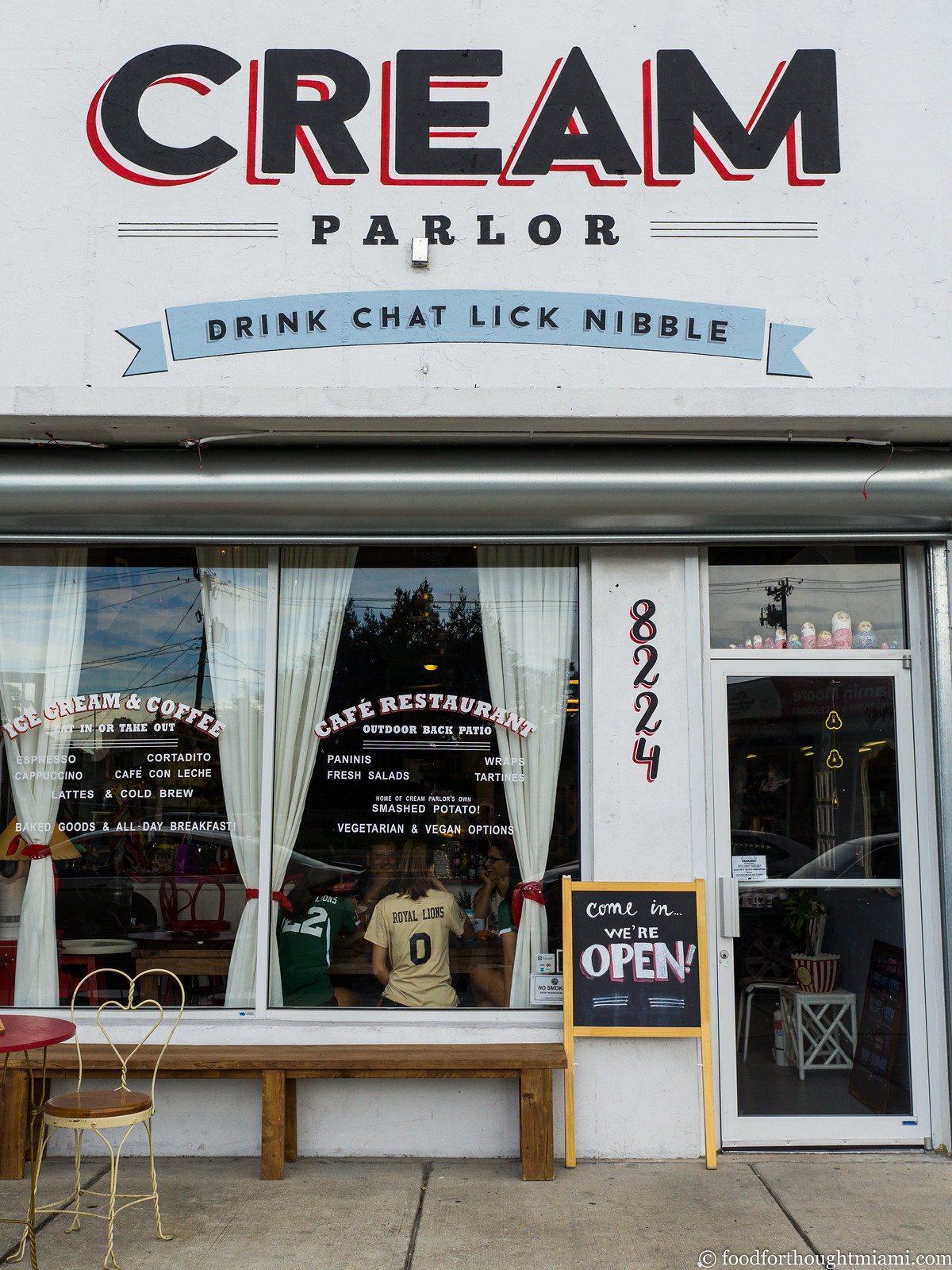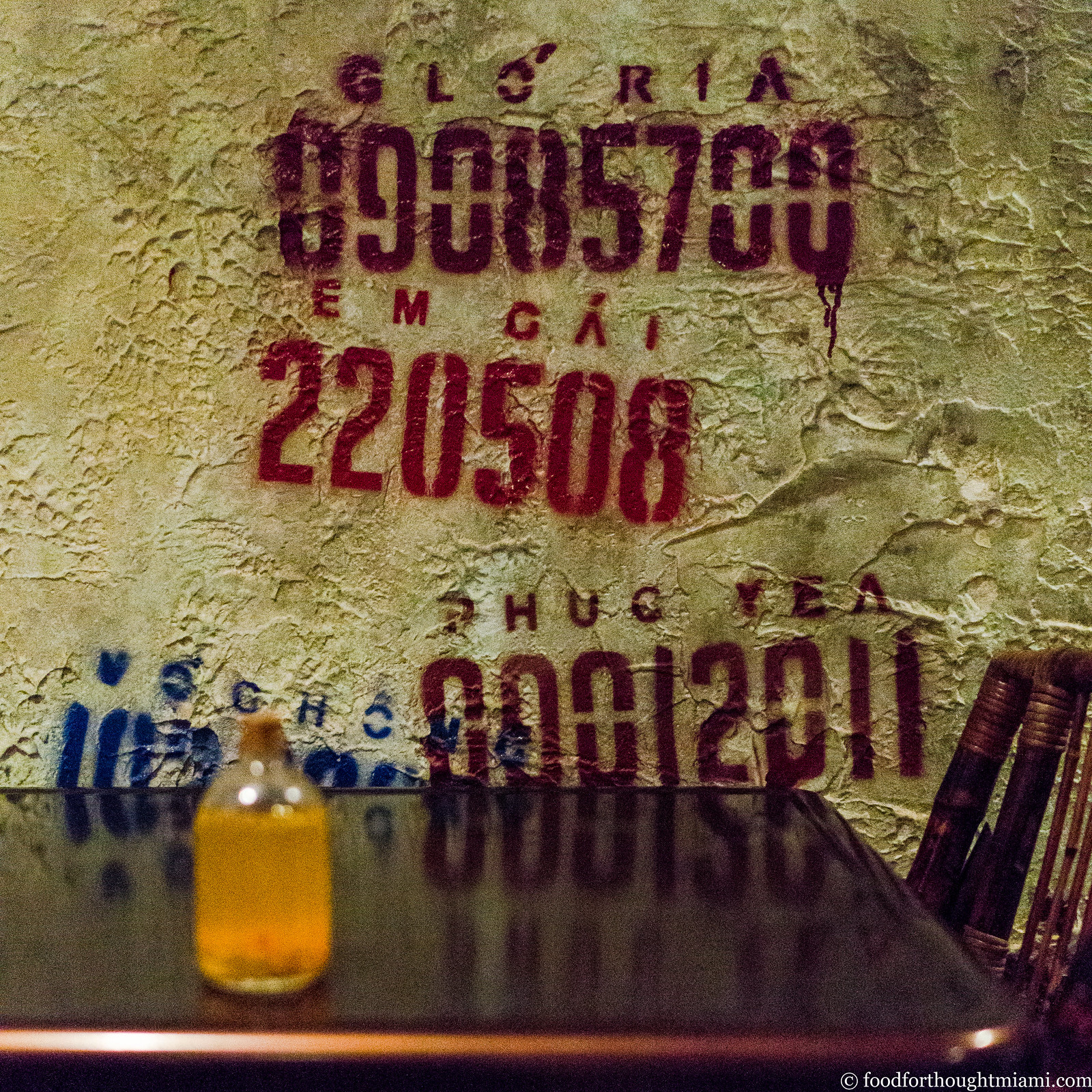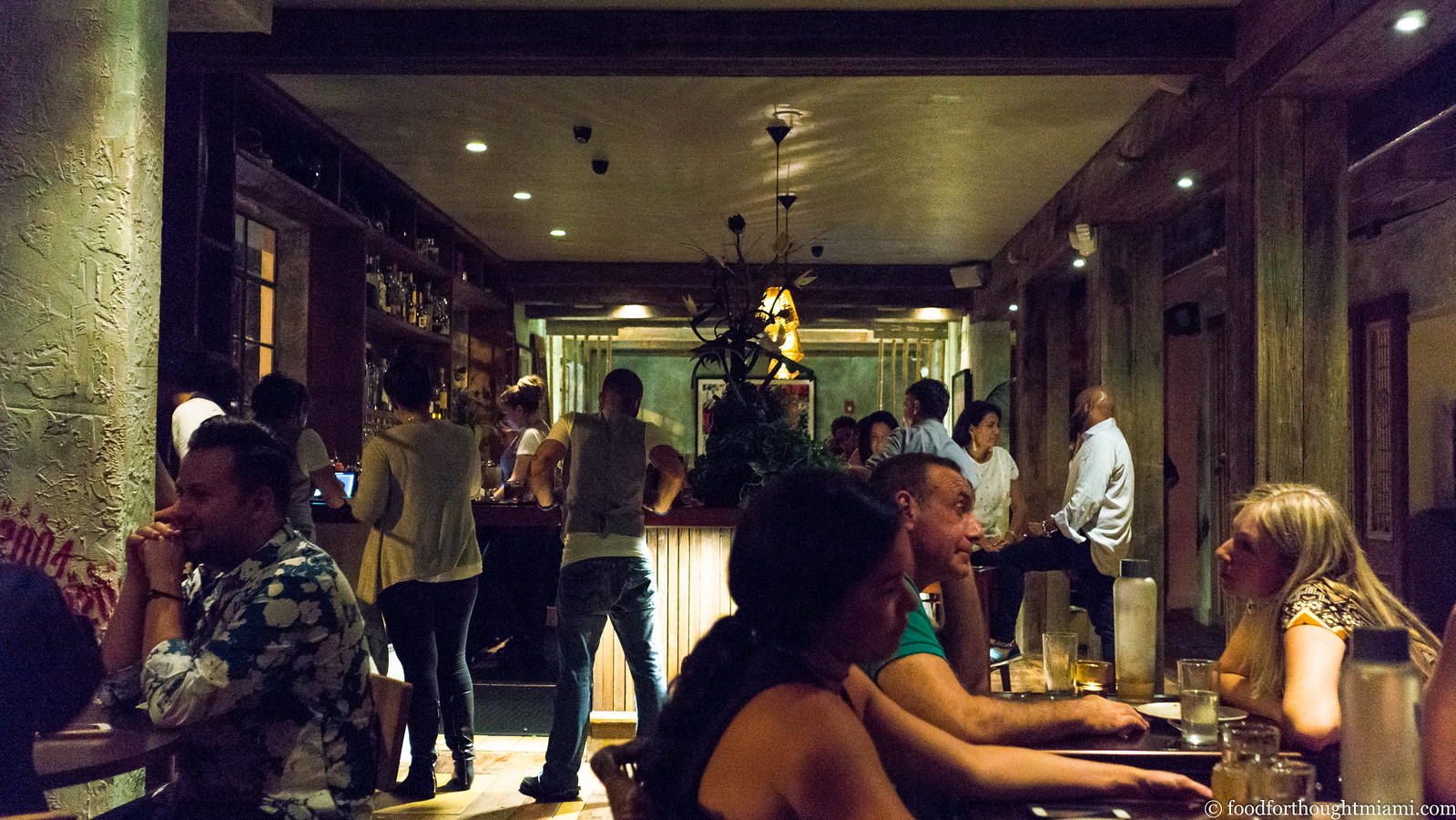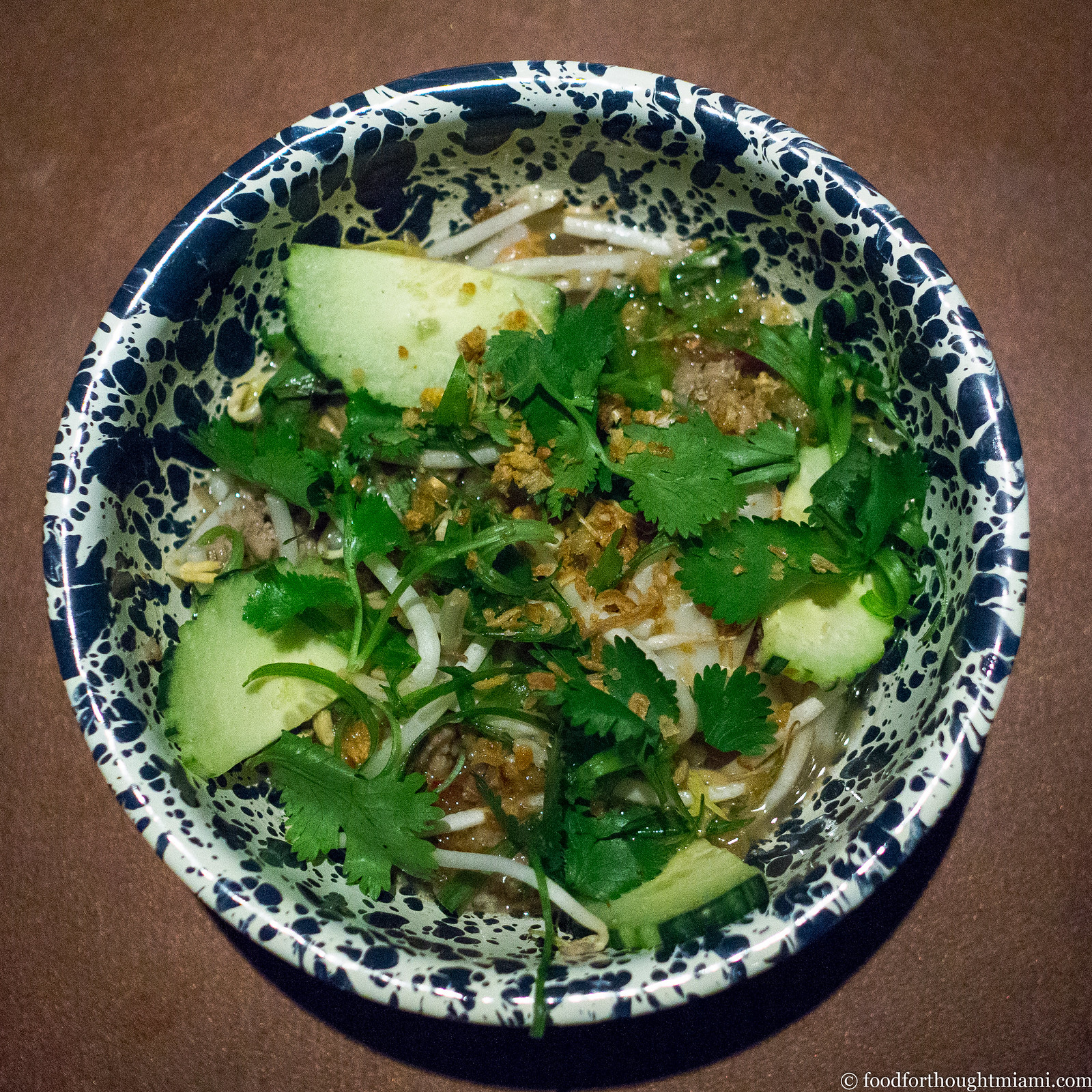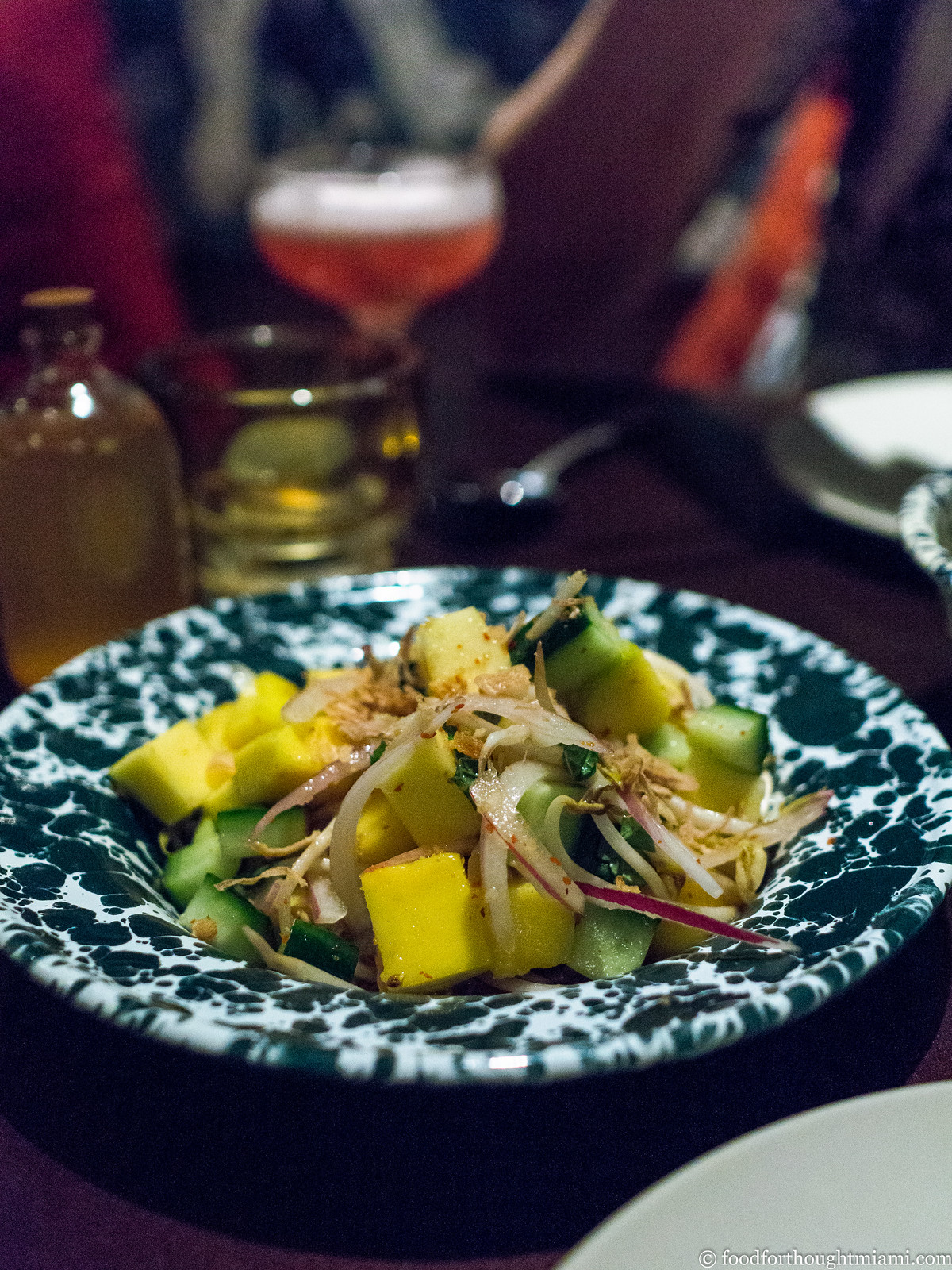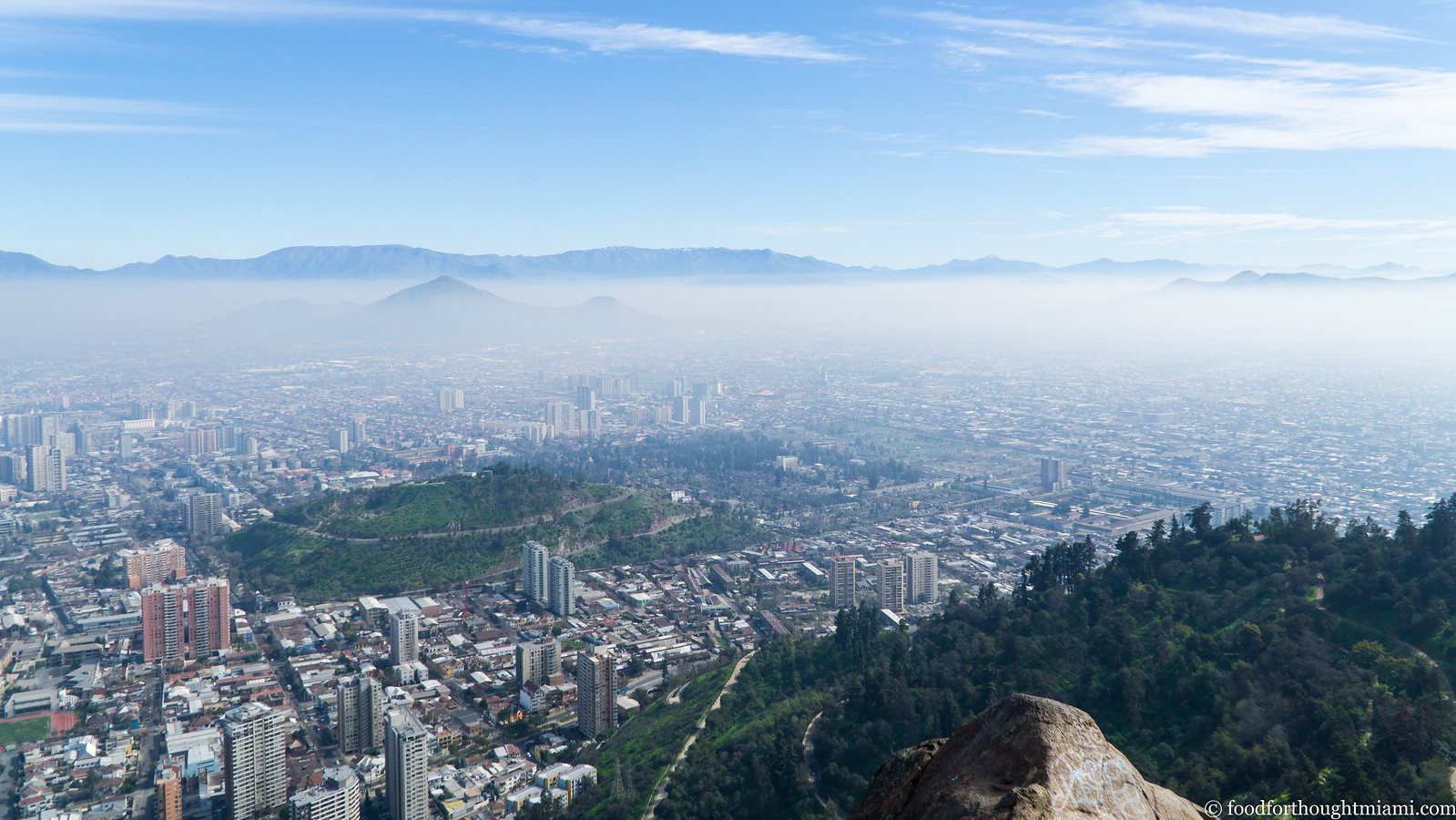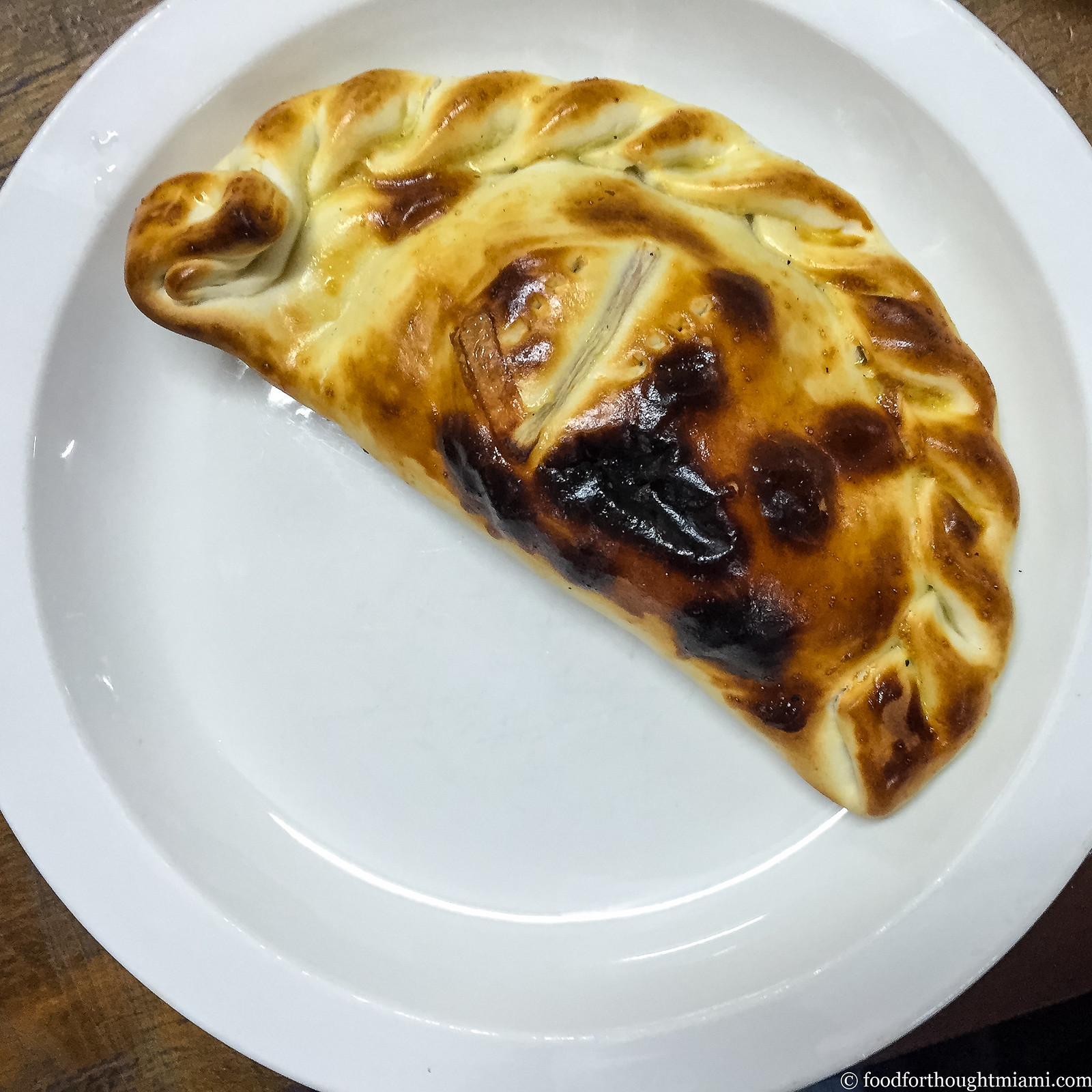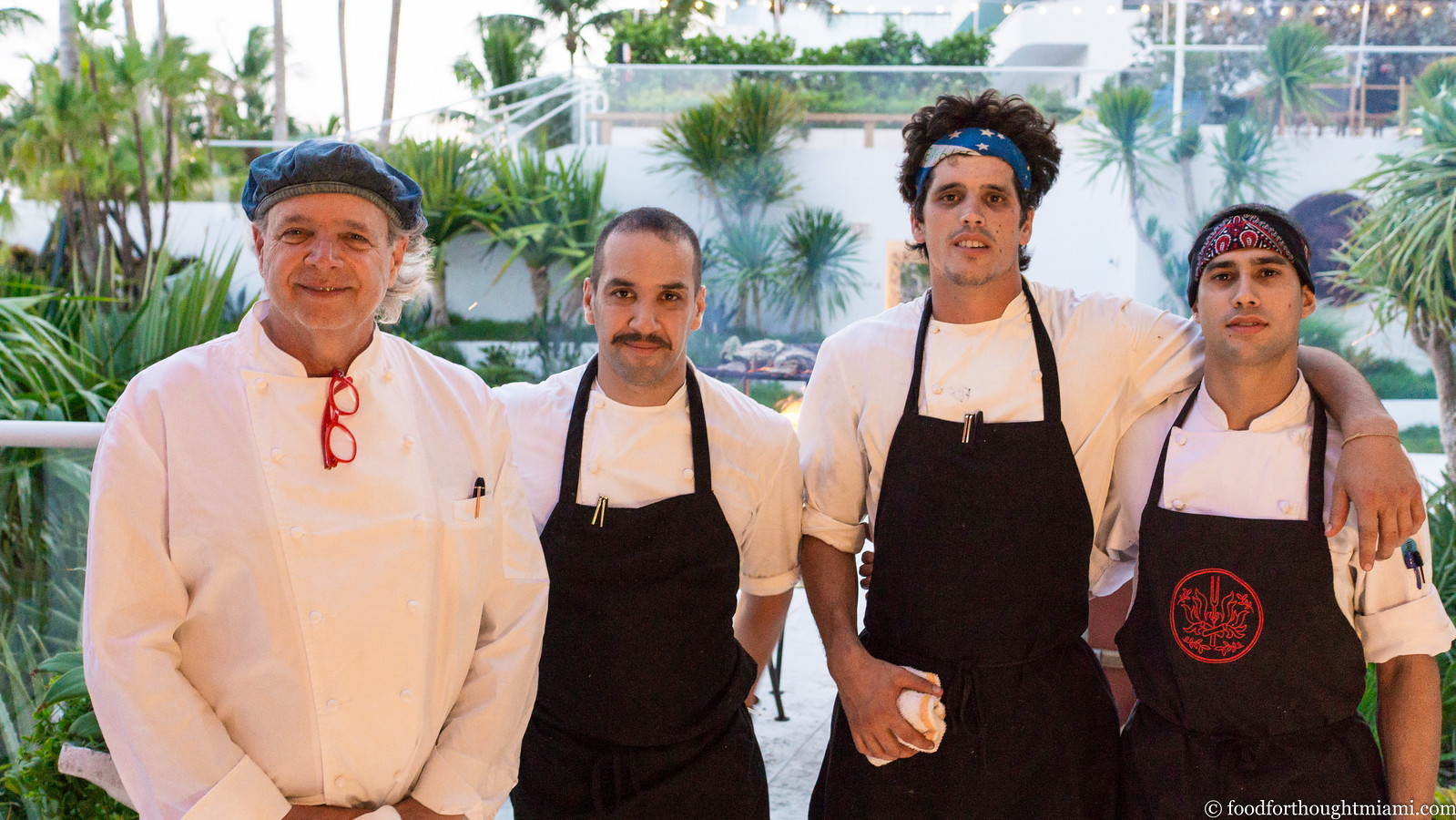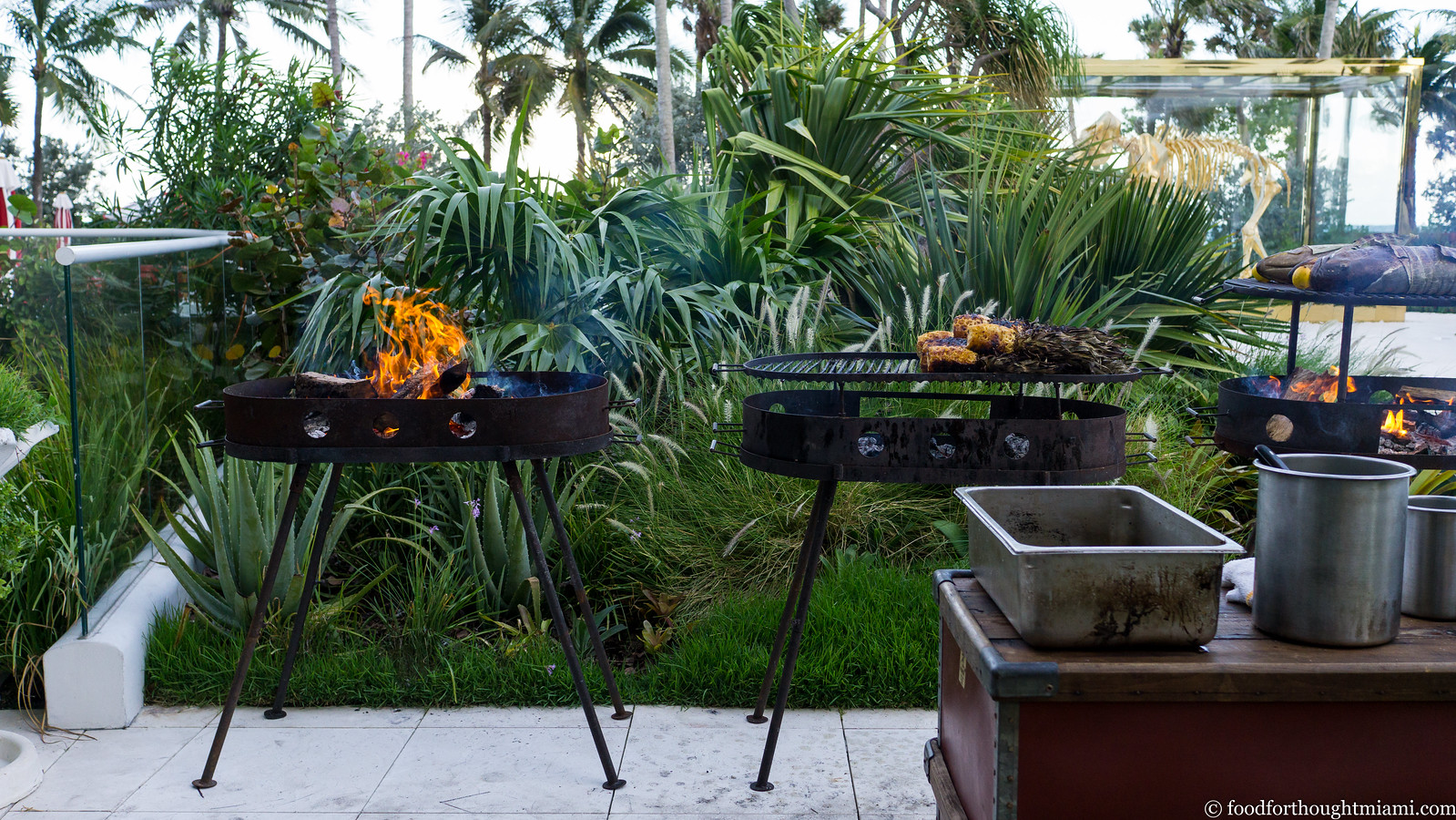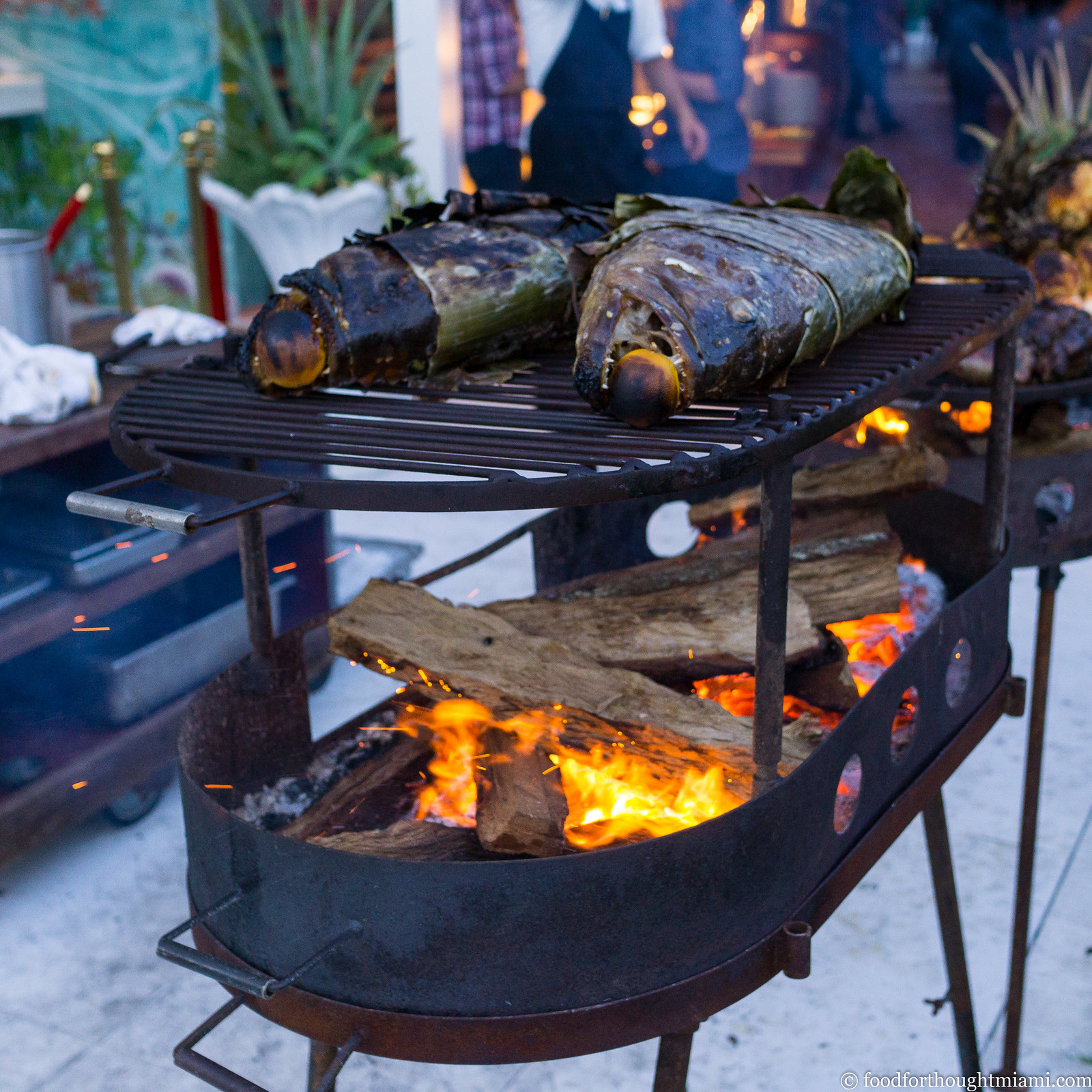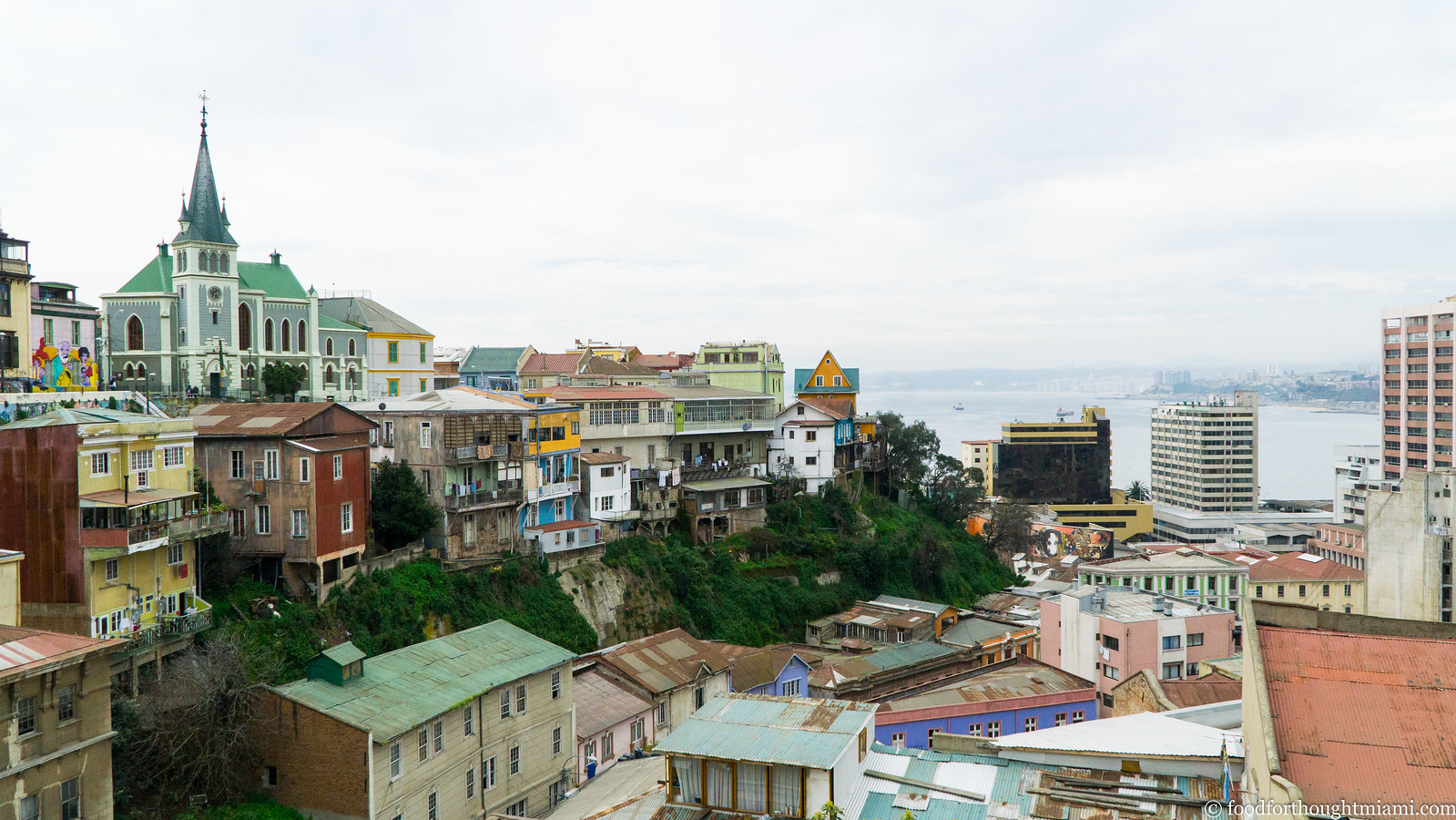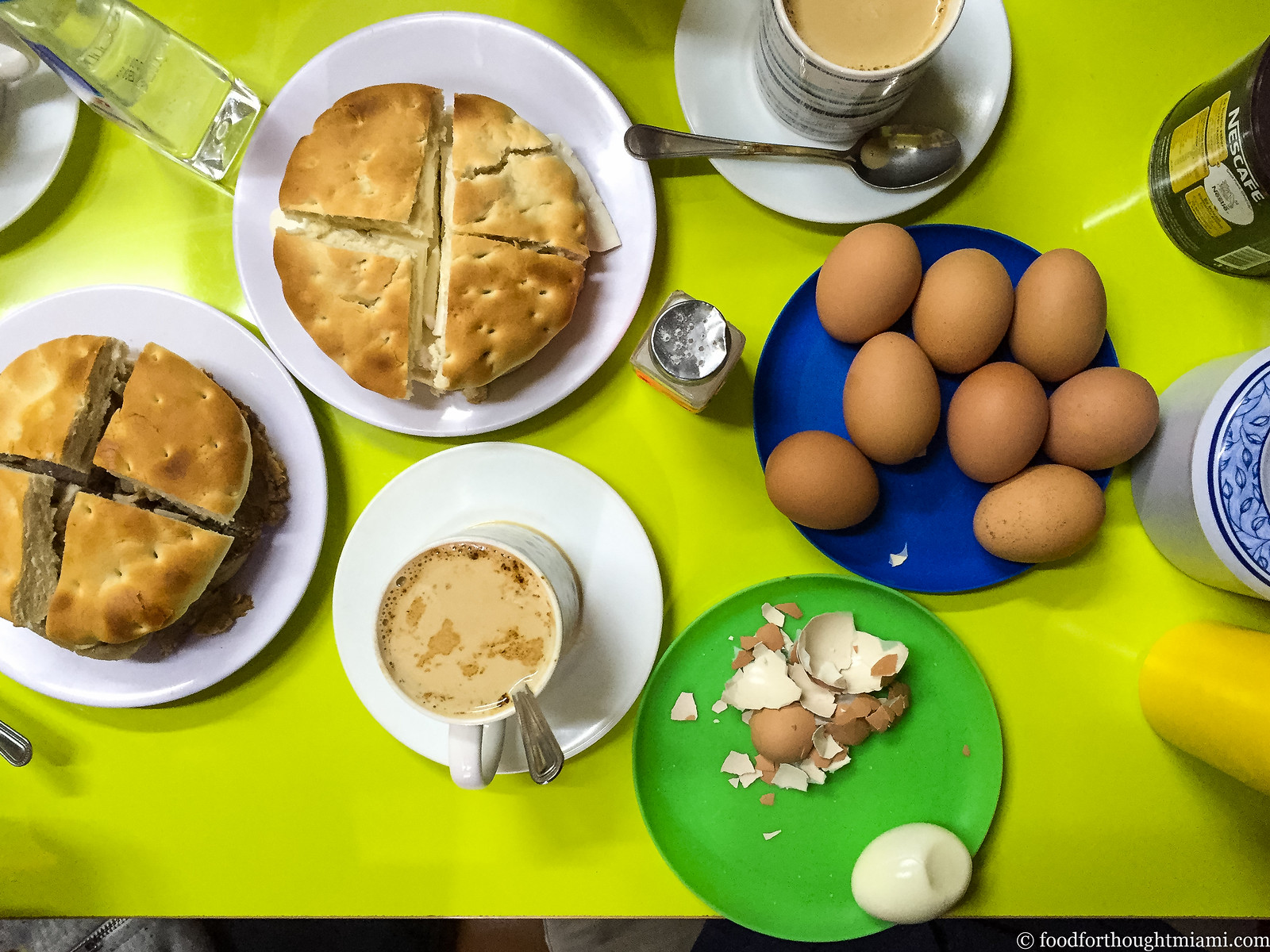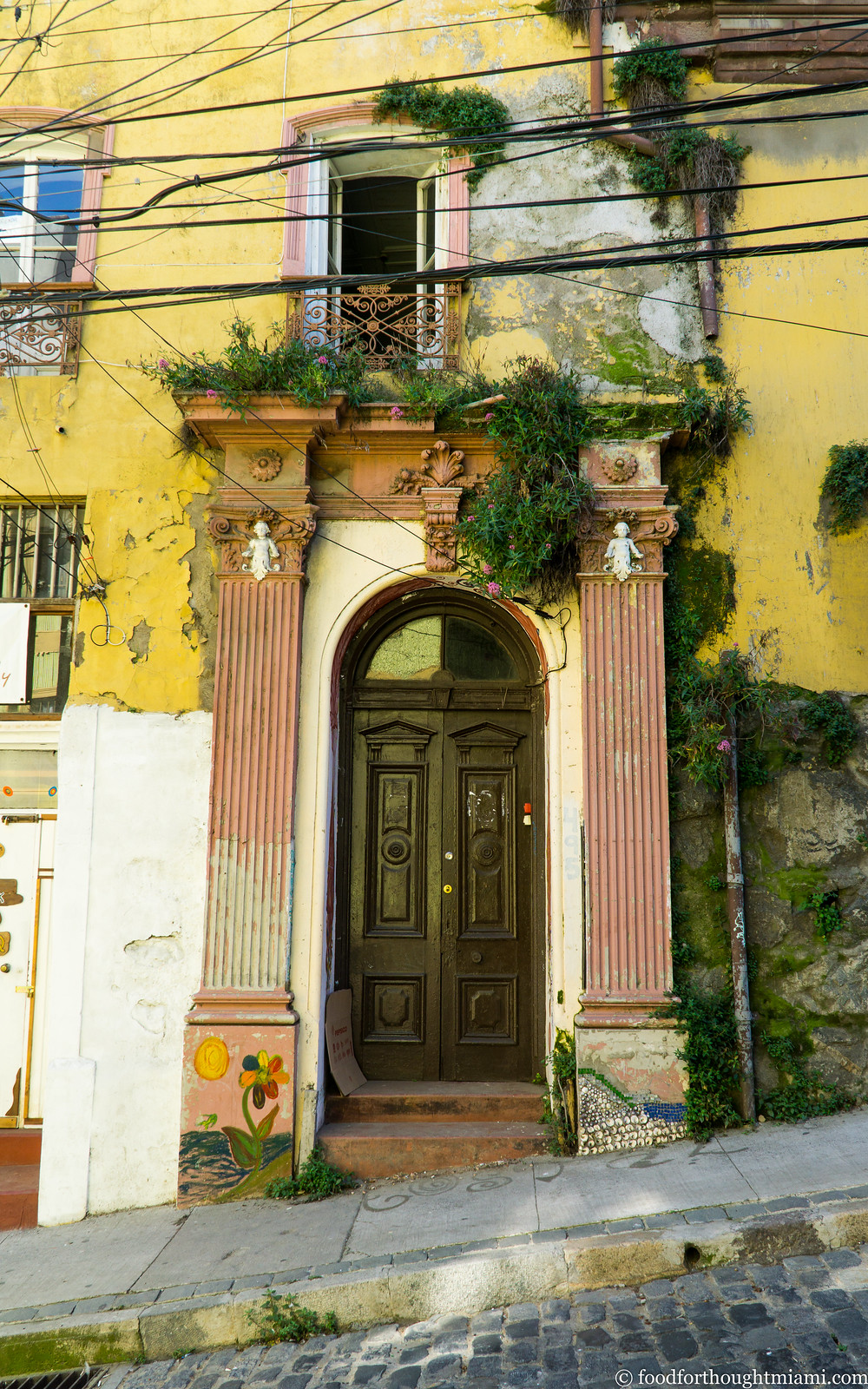Tuesday, September 27, 2016
best thing i ate last week: ice cream sandwich at Cream Parlor
Sometimes, it's the simple things that deliver immense satisfaction. I'd just finished brunch at Pinch Kitchen on Biscayne Boulevard, and noticed that the new ice cream place across the street, Cream Parlor, had finally opened. I took a peek inside, and was pleasantly surprised at what a charming little place it was, loaded with vintage tchotchkes on the walls, mismatched coffee mugs, and flowery grandma plates. It also turns out to be a lot more than just an ice cream shop: there's a pretty extensive breakfast menu, plus sandwiches, tartines, salads, and healthy-sounding vegetable dishes like curried chickpeas and sriracha lentils.
The ice cream flavors veer more playful rather than artisanal: Red Velvet Cake, Prince-inspired Purple Rain, technicolor-hued Unicorn Poop. Among many other options, you can construct an ice cream sandwich from your choice of flavor and cookie, which I did with their salty peanut ice cream and Belgian chocolate and bacon cookies. I highly recommend the combination. What's more, the couple running the place, Johnny and Ainsley Tsokos, are as sweet as their ice creams.
(Some more pictures in this Cream Parlor flickr set).
Cream Parlor
8224 Biscayne Boulevard, Miami, Florida
786.534.4180
Tuesday, September 20, 2016
first thoughts: Phuc Yea | MiMo District (Miami)
It's hard for me to believe it's been five years.
But it's been almost exactly five years to the day since I checked out a curious little pop-up restaurant in a non-descript café in downtown Miami. September 8, 2011 was opening day for Phuc Yea!, a little experiment in Vietnamese flavors by Aniece Mienhold and Cesar Zapata, the team who had previously been at a fun little spot in Buena Vista called Blue Piano. (You can read the report here and see more pictures in this flickr set.) I came away pretty excited by what they were doing: banh cuon so good we immediately ordered two more rounds; tasty salt and pepper smelts; a salad of pig ears marinated in nuoc cham, then fried crisp and served over cubed watermelon; chewy pork riblets with a soy caramel glaze.
That was five years ago. The Phuc Yea pop-up had its three-month run. Then Cesar and Aniece went on to do something different, opening The Federal, which they styled as a "Modern American Tavern," serving buffalo pig wings, creamy duck rillettes topped with marshmallow fluff, and biscuits so good that Williams-Sonoma started selling them. (You can read my thoughts on The Federal here).[1]
But, like me, they never forgot about Phuc Yea, and never gave up on the idea of reviving it. That idea became reality this past week, as they opened a new Phuc Yea in a permanent home in the "MiMo District."
This one is all grown up, in a beautiful bi-level space in an Art Deco style building along Biscayne Boulevard.[2] There's a raw bar and small lounge with a few tables at the entrance, some more tables outside, and upstairs, a dining room with moody, dramatic lighting and another big, welcoming bar, plus plans in the works for an outdoor patio in the back when the weather cools off.
(You can see all my pictures in this Phuc Yea - Miami flickr set).
The menu brings back many of the dishes from the original pop-up, plus several new items too. Most notably, there's now a raw bar featuring oysters on the half shell with a lemongrass and ginger mignonette, a daily crudo, steamed gulf shrimp and lobster, which can be ordered a la carte or as a seafood tower. There's also a "cajun wok" section of the menu, inspired by the hybrid Vietnamese/Cajun crawfish boil restaurants which seem to have originated in Houston and are catching on elsewhere (some good background on the phenomenon in this Southern Foodways video and this piece by Robb Walsh). You can get crab, shrimp, clams, or in season, crawfish, served up with a choice of sauces: cajun, green curry, garlic butter, or chili garlic.
We started with an old favorite, the banh cuon, or pork rolling cake: chewy wide rice noodles, swimming in nuoc cham, that Vietnamese elixir of fish sauce, citrus, garlic and chiles that winds its way like a Bootsy Collins bass line through so many dishes here,[3] garnished with savory ground pork, nubs of cha lua sausage, earthy wood-ear mushrooms, funky dried shrimp, fresh cucumbers and cilantro. It still hits all the right spots for me. So did the meaty, chewy pork riblets, which now also get smoked for an extra layer of flavor.
For something new, I really enjoyed a simple, bright, clean dish of fresh mango and chunky cucumber, tossed with slivered red onions, toasted garlic, dried chiles, bean sprouts and herbs. A light wash of nuoc cham intensifies the flavors, like salting a slice of watermelon. This is a great thing to cut the richness of a buttery seafood boil or a big steak.
(continued ...)
Monday, September 19, 2016
travelogue: Chile, Part 2 - Santiago
After a day in Valparaiso and a quick pass through the Casablanca Valley wine country (more on that in Part 1 of my Chile travelogue), we were back in Santiago for a couple days. It is a big, sprawling city, which became more manageable as we got a sense of its neighborhoods: the relatively quiet, low-scale, Barrio Lastarria, whose European architecture reminded me of San Sebastian, Spain; the funky, bohemian Barrio Bellavista; the bustling business district around the Palacio de la Moneda; the towering high-rises and shiny new shopping malls of Providencia; the über-posh, almost Beverly Hills-like Vitacura neighborhood where Boragó restaurant resides; the bucolic stretch of shops and cafés in the Barrio Italia.
We made our home base at the Lastarria Boutique Hotel, a really nice modern refurbishment of a big 1920's house on a Lastarria side street. Most of the high-end chain hotels are in Providencia or nearby Las Condes, but we liked this location: not as generically big-city, closer to the museums, and a ten-minute walk through Bellavista to the Parque Metropolitano which surrounds Cerro San Cristóbal.
After checking in and dropping our bags, we made our way over to the Plaza de Armas – the original city center. The plaza was packed: with entertainers hustling for tips, with crowds cheering them on, with merchants set up along the street, and with – well, a grocery cart being pushed by a couple Peruvian guys, filled with an odd assortment of stuffed animals and no less than four dogs, all of whom seemed perfectly happy with the arrangement.
Many Santiago restaurants are closed on Sundays, but we found a spot along Calle Monjitas which had an assortment of different empanadas all made and baked in-house, including this one stuffed with shrimp and cheese.
Nearby is the Museo Chileno de Arte Precolombino, which houses a great collection of pre-Columbian artworks and artifacts. One floor displays items from the different regions and cultures of Chile, like this cat-faced bowl made by the Diaguitas peoples, dating from around 1,000 A.D. Another floor more broadly covers most of South and Central America and the Caribbean. It's a well-organized exhibition that gave history and context to our visit to this region.
For dinner, we met up with a friend of Mrs. F and her family at a place called Las Cabras. Though it's right next to the gaudy Costanera Center, a shopping mall-office building complex that includes the tallest building in Latin America, Las Cabras is a modest, no-frills place. It calls itself a "fuente de soda" – a "soda fountain," a Chilean institution much like the U.S.'s mid-century drugstore luncheonettes.
At Las Cabras, Chef Juan Pablo Mellado Arana cooks straightforward Chilean classics, but does it with diligent attention to ingredients and technique – and cocktails, to boot. (For more backstory, there was a good feature in the New York Times last year).
We scooped pebre, a mild salsa of tomatoes, onions, cilantro and chiles, with crusty rolls, and sipped pisco sours, and then shared a palta cardenal, a halved avocado overstuffed with creamy shrimp salad, served over a salad of greens and hard-boiled eggs and olives. We ate charchas de chanco (tender, sticky braised pork cheeks), and beefy lengua (tongue) in a tangy tomato sauce, and a hearty sánguche (sandwich) of grilled churrasco steak.
Our Chileno friends approved of the choice. (Unfortunately, it was too dark at our outdoor table for any good photos).
Las Cabras Fuente de Soda
Luis Thayer Ojeda 0166, Providencia, Santiago, Chile
+56 22 232 9671
(continued ...)
Monday, September 12, 2016
Cobaya Fuego with Francis Mallmann
Our last Cobaya dinner, back in July, was with Paul Qui at his restaurant Pao in the Faena Hotel on Miami Beach. We had an unexpected visitor during that dinner: Francis Mallmann, the most celebrated chef in Argentina, and also Pao's neighbor at the Faena, where his restaurant Los Fuegos also resides. We spent some time explaining what we do, and I saw a twinkle in his eye. A couple months later, and we were back at the Faena, this time for a dinner with Chef Mallmann and his crew on the veranda behind the hotel.
Mallmann is a master of live fire cooking, but I suspect that the hotel folks were a bit reluctant to have one of his more elaborate pyres assembled on the grounds of their billion dollar project. These fires were somewhat more modest, but were used to good effect.
(See all the pictures in this Cobaya Fuego with Francis Mallman flickr set).
With Damien Hirst's gold-plated mammoth as a backdrop, our guinea pigs assembled on the veranda, and servers circulated with a couple snacks before we were seated.
 I remain forever loyal to any sweetbread preparation Michelle Bernstein does, but Mallmann's mollejas will run a close second. Sliced fairly thin and aggressively seared on the grill until the edges were charred to almost black, these sweetbreads were served over toasted bread daubed with a creamy pepper purée and topped with a sliver of pickled onion.
I remain forever loyal to any sweetbread preparation Michelle Bernstein does, but Mallmann's mollejas will run a close second. Sliced fairly thin and aggressively seared on the grill until the edges were charred to almost black, these sweetbreads were served over toasted bread daubed with a creamy pepper purée and topped with a sliver of pickled onion.A crudo of fresh scallop matched the shellfish's sweetness with an assertive dose of salt and citrus, tucked into crisp, refreshingly bitter endive leaves.
We then settled our fifty guinea pigs into seats at one long communal table for fifty stretching along the covered patio which runs between the restaurant and the hotel pool – surely the biggest group we've ever been able to assemble at one table.
(continued ...)
Tuesday, September 6, 2016
travelogue: Chile, Part 1 - Valparaiso and Casablanca Valley
I'm not sure I ever would have thought to go to Chile on my own. But Mrs. F had been in Santiago a couple years ago for something work-related, and came back raving about the bustling, cosmopolitan city surrounded by the Andes mountains. After doing some homework, I found plenty to get excited about too. We plotted a week-long trip when we'd have all the family together: a day on the Pacific coast in Valparaiso, a quick tour through Casablanca Valley wine country, a couple days in Santiago, wrapping up with a stay in the Atacama desert toward the north.
You probably know by now that the food usually plays a not-inconsequential role in my choice of travel destinations. But I didn't know much at all about Chilean cuisine. In fact, to be honest, I'd only heard of one restaurant in the entire country: Rodolfo Guzman's Boragó, a high-end tasting-menu place that has drawn the attention of the International Dining Mafia. Needless to say, this was entirely a function of my own ignorance: what I found was a country with a rich, complex and delicious culinary culture fueled by the incredible bounty of seafood from its extensive coast and a combination of pre-Columbian and colonial ingredients and influences, with a sense of history and tradition as well as creativity and playfulness.
Our red-eye flight to Santiago arrived around 6 a.m., and we'd arranged for a driver to take us to Valparaiso, about 1 ½ hours due west on the coast. About a half hour in, our driver Gustavo realized we needed a little sustenance. Near the town of Casablanca, he pulled into Caféteria Don Floro, a small, open-air roadside restaurant. Each of the formica booths was set with a plate of hard-boiled eggs and canisters of instant coffee. We peeled and salted eggs and sipped Nescafé café con leches as some pan hallulla, a dense, chewy, round bread, was toasted over a charcoal brazier near our feet.
The menu at Don Floro was comprised almost entirely of sandwiches – Chileans, it seems, eat sandwiches for breakfast, lunch and dinner – so we shared one stuffed with "arrollado de campo," a roll of pork bits wrapped in its skin, and another with "queso fresco de vaca soltero," fresh cheese made from the milk of a single cow. I'm not sure this place was any better or worse than any other roadside stand along the way between Santiago and Valparaiso, but Gustavo clearly had an opinion on such matters, as he drove by several other places before stopping here, and our breakfast validated his judgment. We were groggy, and hungry, and this really hit the spot.
(A few more pictures in this Caféteria Don Floro flickr set).
Appropriately fortified, we made it to Valparaiso without incident, where we checked into the Fauna Hotel, a clean-lined, modern property which is actually a refurbishment of two old buildings that date back to the 1870's.[1] The hotel was both stylish and comfortable, and its setting offered a fantastic vantage point (the picture at the top of this post was taken from the window of our room), while also being centrally located for exploring the town. Valparaiso is a city of hills, and the Fauna sits atop of one of them – Cerro Alegre – across from a funicular station at its summit, at the end of a pedestrians-only street.
(Some more pictures in this Fauna Hotel flickr set).
Fauna Hotel
Pasaje Dimalow #166, Cerro Alegre, Valparaiso, Chile
+56 32 3270719
Like Cartagena, Colombia, which we visited earlier this year, Valparaiso's historic quarter has been designated a UNESCO World Heritage Site. And it's easy to see why: the twisting streets, steep hills, and colorful buildings (many of which date back to the 19th century), all overlooking the Pacific ocean, are incredibly picturesque and charming, and also a great example of urban adaptation to a tricky geography. But what was truly fascinating to me about the town was the confluence of the historical and the contemporary. It is no exaggeration to say that virtually every available surface of the city is covered in street art; some of it amateurish, but the bulk of it really skilled and much of it quite beautiful. What at first blush as we drove into town seemed signs of urban blight were actually just the opposite.[2]
We spent the day just wandering around town, up and down the hills, seeing colorful buildings and murals everywhere, occasionally catching a glimpse of the ocean. Often, we were accompanied by one of the friendly dogs that roam the streets throughout Chile.[3] A visit to the Palacio Baburizza, the 1916 Italian-style mansion of a Croatian businessman which has been made into a museum, was a nice little pit-stop. We had lunch at Café Vinilo, whose modest exterior belied a surprisingly ambitious menu including some excellent crab empanadas, a rockfish ceviche spiked with fresh ginger and mint, and an open-faced sandwich topped with creamy blood sausage and a fried egg.
(Some more pictures from around the city are in this Valparaiso, Chile flickr set).
(continued ...)
Subscribe to:
Posts (Atom)

